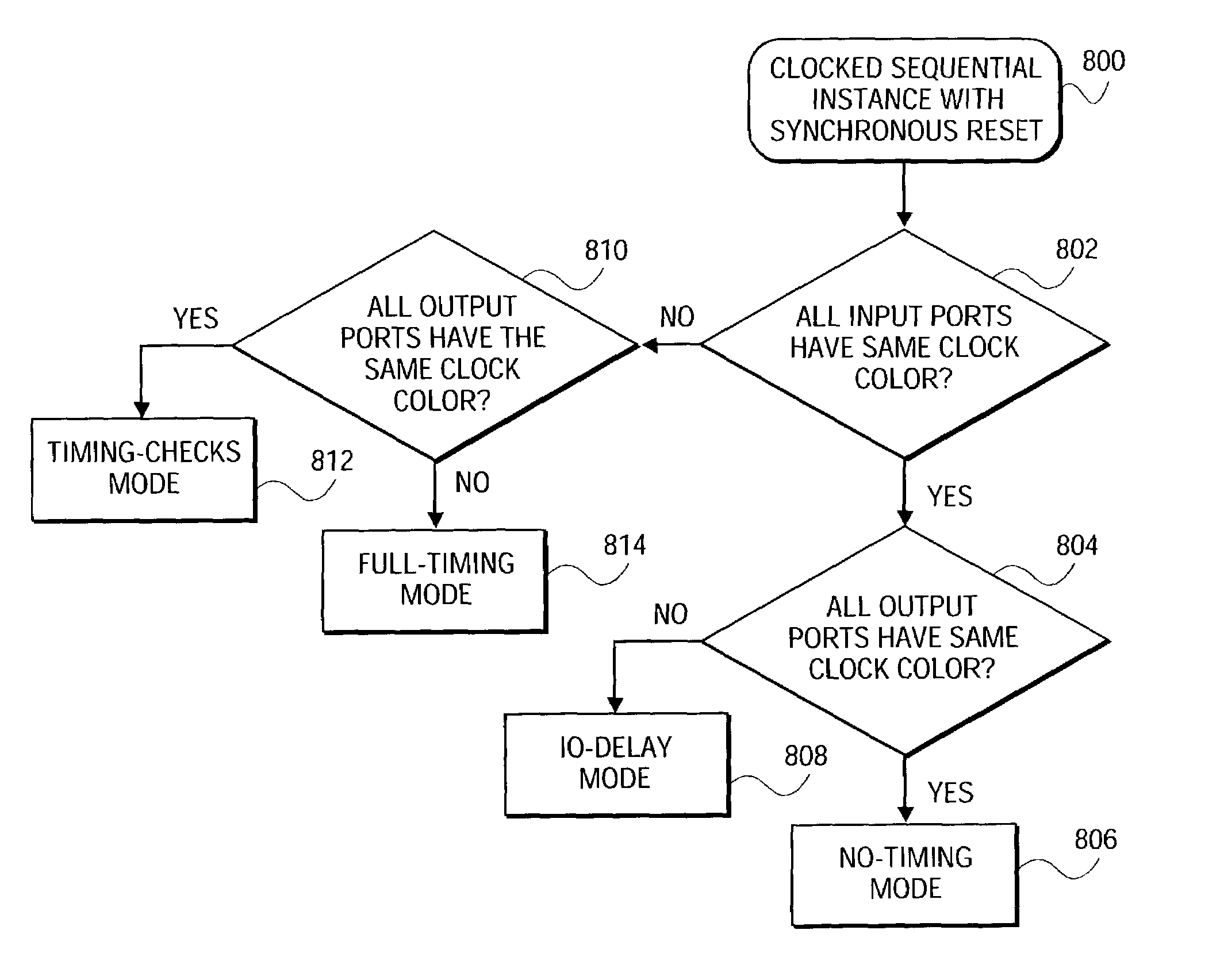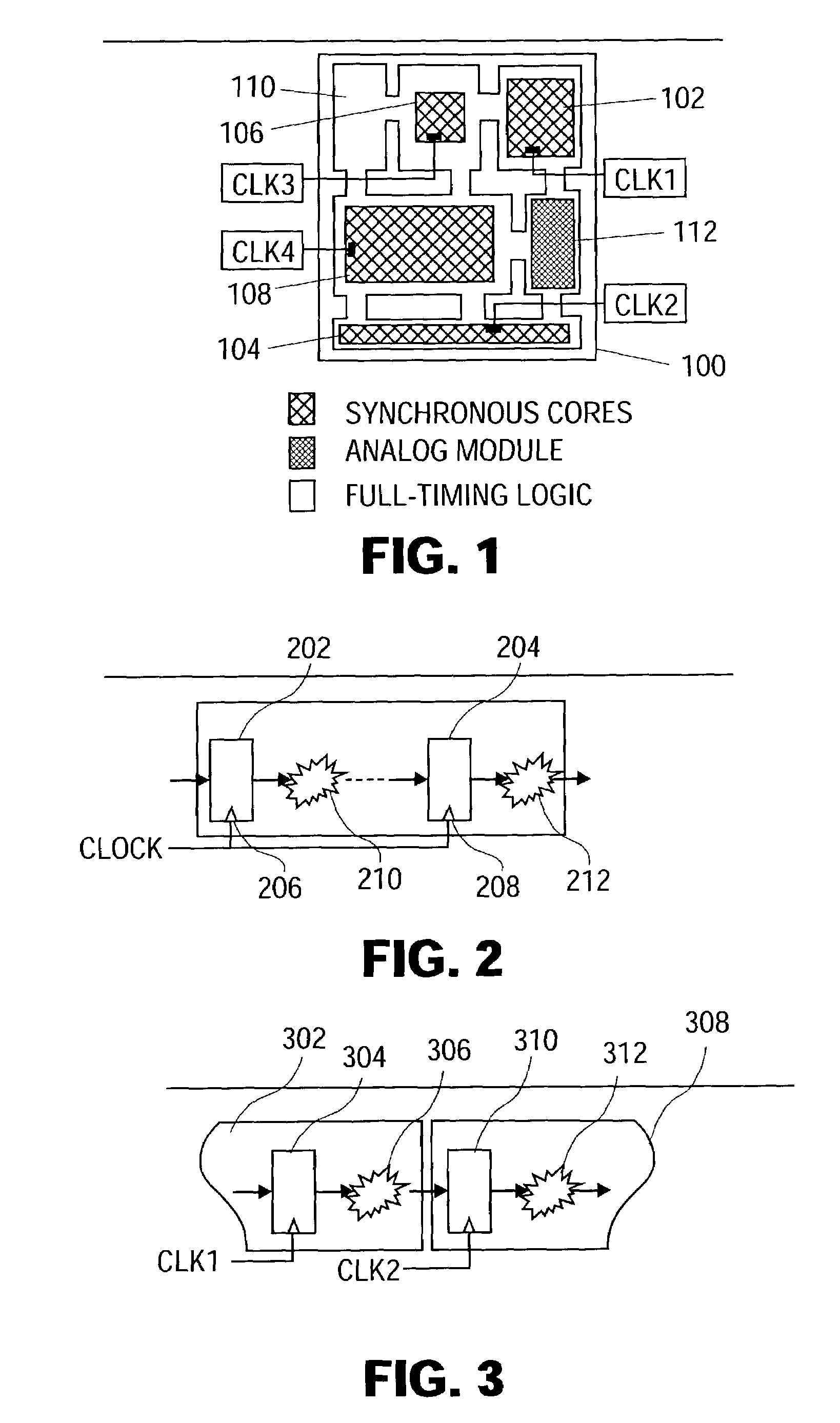Method and apparatus for enhancing the performance of event driven dynamic simulation of digital circuits based on netlist partitioning techniques
- Summary
- Abstract
- Description
- Claims
- Application Information
AI Technical Summary
Benefits of technology
Problems solved by technology
Method used
Image
Examples
Embodiment Construction
[0016]The disclosed methodology leverages the fact that the synchronous parts of a design have been validated by STA techniques to accelerate full-chip simulation by removing the timing from their synchronous cores. Synchronous cores are determined by netlist partitioning that can be applied at the module level or at the full-chip level. Partitioning at the module level preserves the intended design hierarchy and is a natural extension of the exiting STA techniques. However, when partitioning is applied at the full-chip level, larger synchronous cores are defined since they can include the inter-block regions separating two synchronous blocks controlled by the same clock. Furthermore, the synchronous regions determined by full-chip partitioning are delimited by sequential elements. After partitioning, the timing of the synchronous regions of each clock is verified by STA tools. Having verified the timing of the synchronous cores using STA techniques and generated the corresponding a...
PUM
 Login to View More
Login to View More Abstract
Description
Claims
Application Information
 Login to View More
Login to View More - R&D
- Intellectual Property
- Life Sciences
- Materials
- Tech Scout
- Unparalleled Data Quality
- Higher Quality Content
- 60% Fewer Hallucinations
Browse by: Latest US Patents, China's latest patents, Technical Efficacy Thesaurus, Application Domain, Technology Topic, Popular Technical Reports.
© 2025 PatSnap. All rights reserved.Legal|Privacy policy|Modern Slavery Act Transparency Statement|Sitemap|About US| Contact US: help@patsnap.com



